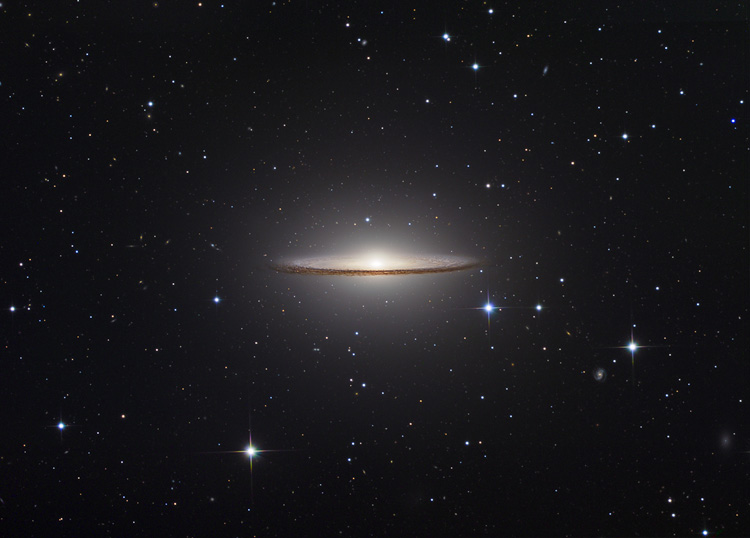
About this Image |
|
|
This brilliant galaxy was named the Sombrero Galaxy because of its visual appearance.
We view it from just 6 degrees south of its equatorial plane, which is outlined by a rather thick dark rim of obscuring dust.
The dust lane was probably the first discovered by William Herschel in his great reflector.
|
|
|
| Optics |
20 " Keller cassegrain in corrected secondary focus at f/9 |
| Mount | Liebscher GEM |
| Camera | SBIG STL-11000M at -25C, 8-pos STL filter wheel |
| Filters | Baader LRGB |
| Date | Apr 29 / May 01, 2008 |
| Location | IAS/Hakos Namibia |
| Sky Conditions | dark skies, raw FWHM 1.5-1.9" temperature 15 C, |
| Exposure |
C:L:R:G:B = 60:120:30:30:30 minutes (15-minute sub-exposures);
all 1x1. |
| Programs used |
Maxim DL 4.5;
CCDStack Photoshop CS3 |